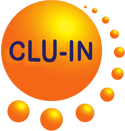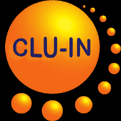Remediation Technology Demonstration Project Profiles
Phosphate-Induced Metal Stabilization (PIMS[TM]) Remediation at Camp Stanley Storage Activity, SWMU B-20 in Texas
Last Updated: August 6, 2008 |
||
| Site Identifying Information | ||
| Site Name, Location: | Camp Stanley Storage Activity (CSSA), Solid Waste Management Unit (SWMU) B-20, Texas, United States
(EPA Region 6) |
|
| Cleanup Program: | Environmental Security Technology Certification Program | |
| Entity Responsible for Cleanup: | Army | |
| Site Type: | Open Burn/Open Detonation Area | |
| Government Affiliation: | Federal | |
| | ||||||||||
| Project Information | ||||||||||
| Project Name: | Phosphate-Induced Metal Stabilization (PIMS[TM]) Remediation at Camp Stanley Storage Activity, SWMU B-20 in Texas | |||||||||
| Project Status: | Complete | |||||||||
| Contaminants Treated: |
| |||||||||
| Media Treated: |
| |||||||||
| Demonstration Technology and Type: | Solidification/Stabilization (In Situ) (Ex Situ Physical/Chemical) |
|||||||||
| Geology and Hydrogeology: | The geology of the site is essentially high-angle, normally-faulted Cretaceous deposits composed of alternating beds of limestone, marly limestone, blue shale, and occasional gypsum beds of the Glen Rose formation. As a result of the regional faulting, many fracture systems have developed in the deposits underlying the site. The upper Trinity aquifer is located within the upper member of the Glen Rose formation. The upper Glen Rose is exposed over much of the SWMU B-20 site, and recharge to the upper Trinity aquifer is from direct precipitation on outcrops and stream flow losses. Movement of groundwater in the upper Trinity aquifer is restricted to lateral flow along bedding planes between marl and limestone, where dissolution has enhanced permeability of the limestone. Occurrence of groundwater in this aquifer is sporadic and dependent on precipitation and secondary porosity features, indicating that beds within this aquifer are perhaps not hydraulically connected by avenues of vertical permeability. The upper Trinity aquifer is under water table conditions and is generally of poor quality; most wells in the aquifer achieve only low production. Generally, soil types at CSSA are dark-colored, gravelly clays and loams. The soil horizon at the SWMU B-20 site is typically thin, ranging from 0.5 to 6 feet (ft) in thickness across the site, and includes the Brackett-Tarrant association, Crawford and Bexar stony soils, and Krum complex, according to the U.S. Department of Agriculture (USDA) Soil Conservation Service (SCS) soil survey for Bexar County, Texas. All soils are underlain by limestone and are generally grayish-brown, loamy to various degrees, and with various amounts of clay and limestone gravel. The pH of the soils ranges from 7.5 to 8.0. | |||||||||
| Demonstration Start Date: | 4/2002 | |||||||||
| Demonstration Completion Date: | 4/2003 (Actual) | |||||||||
| Demonstration Year: | 2003 | |||||||||
| Year of Publication: | 2006 | |||||||||
| Goal of the Demonstration: | Leachate from amended soils by natural waters: Pb concentrations below maximum contaminant levels (MCL) for lead in drinking water (0.015 milligrams per liter (mg/L)). Amended soil: - 1.5 mg/L (leachate concentration) (State of Texas class 2 nonhazardous waste classification criteria, as indicated by results from batch toxicity characteristic leaching procedure (TCLP) tests). Treatment should reduce bioavailability or bioaccessibility of lead in the soil. | |||||||||
| Design and Operations: | Soil was mixed with 3% Apatite IITM. The field mixing efforts consisted of using nonspecialized equipment (front-end loader and a maintainer) to effectively mix the Apatite IITM material into the Pb-contaminated soil from the SWMU B-20 site at a rate of about 500 yd3 per day. Mixing efforts were conducted as batch treatments of 10 yd3 lots with a 3% by weight mixture of Apatite IITM material added to the contaminated soil. The soil was mixed with a maintainer, which folded the Apatite IITM material into the soil matrix in passes within the treatment area. The front-end loader then removed the amended material to a separate location for staging before final emplacement by spreading over the site. Three field lysimeters were installed in the treatment zone to monitor leachate. A small portion of the remaining soils, approximately 10 yd3, was left unamended and spread over a 20 ft x 20 ft plot. A lysimeter was also installed in this unamended plot to evaluate baseline conditions and compare performance between the unamended and amended soils. | |||||||||
| Performance Data Relevant to Demonstration Goals: | Soil initially contained an average of 1,942 mg/kg, with an upper confidence limit calculated at 2,402 mg/kg. Waste classification results from batch TCLP tests indicated that the unamended soil did not meet the 1. 5 mg/L cleanup goal and required treatment. After treatment with PIMSTM using Apatite IITM, the soils did meet these criteria with an average TCLP concentration of 0.46 mg/L. Field leachate monitoring results from the demonstration site after treatment averaged 0.0065 mg/L Pb, well below the 0.0150 mg/L standard for Pb in drinking water. Bioaccessibility data showed that treatment reduced Pb bioavailability. | |||||||||
| Other Interesting Aspects or Significance of the Demonstration: | The performance objectives for the project were met and no additional scale-up was required. | |||||||||
| Lessons Learned: | There appear to be few limitations on applying PIMSTM (using Apatite IITM) to range soils in both soil characteristics, site conditions, time constraints, operational issues, and cost. The technology is simple, easy, and less costly than any alternative to date. It is important to perform site-specific feasibility studies to determine if the soil type and metal concentrations are amenable to using the PIMS technology. | |||||||||
| Other Demonstration Information (such as cost data, if available): | Total start up costs were $8,100 and total operational costs were $55,675. The unit cost was less than $22 per yd3 of soil for treating 3,000 yd3of soil. | |||||||||
| Other Comments about the Demonstration: | The objectives of the demonstration were 1) to determine suitable emplacement methodologies for the PIMSTM in situ treatment of lead-contaminated soils, and 2) to determine actual field implementation costs. A further objective was to actually treat all of the lead-contaminated soil at an ordnance treatment unit at CSSA so the soil could be released back to the site in a manner consistent with pending regulatory approval and future site use plans. | |||||||||
| Vendor(s) or Consultant(s) Associated with the Demonstration: |
Parsons, Inc. |
|||||||||
| Information Source(s) for the Demonstration: |
U.S. Department of Defense. ESTCP Cost and Performance Report ER-0020. PIMSTM: Remediation of Soil and Groundwater Contaminated With Metals. June 2006. http://costperformance.org/pdf/20070523_401.pdf |
|||||||||
| Contact Information | ||||||||||
| Point(s) of Contact: |
James Conca NMSU Carlsbad Environmental Monitoring & Research Center Carlsbad, New Mexico 88220, United States Telephone: 505-234-5555 (Work) and 505-706-0214 (Cell) Fax: 505-887-3051 E-mail: jconca@cemrc.org |
|||||||||
|
Brian Murphy CSSA 1408 Moore Place, SW Leesburg, Virginia 20175, United States Telephone: 571-331-5374 E-mail: murphyb@adelphia.net |
||||||||||
|
Ken Rice Parsons, Inc. 8000 Centre Park, Suite 200 Austin, Texas 78754, United States Telephone: 512-719-6050 Fax: 512-719-6099 E-mail: Ken.R.Rice@parsons.com |
||||||||||
|
Judith Wright (Primary Contact) PIMS NW, Inc. UFA Ventures, Inc. 403 West Riverside Dr. Carlsbad, New Mexico 88220, United States Telephone: 505-628-0916 Fax: 505-628-0915 E-mail: judith@ufaventures.com or judith@pimsnw.com |
||||||||||
| | ||||||||||




